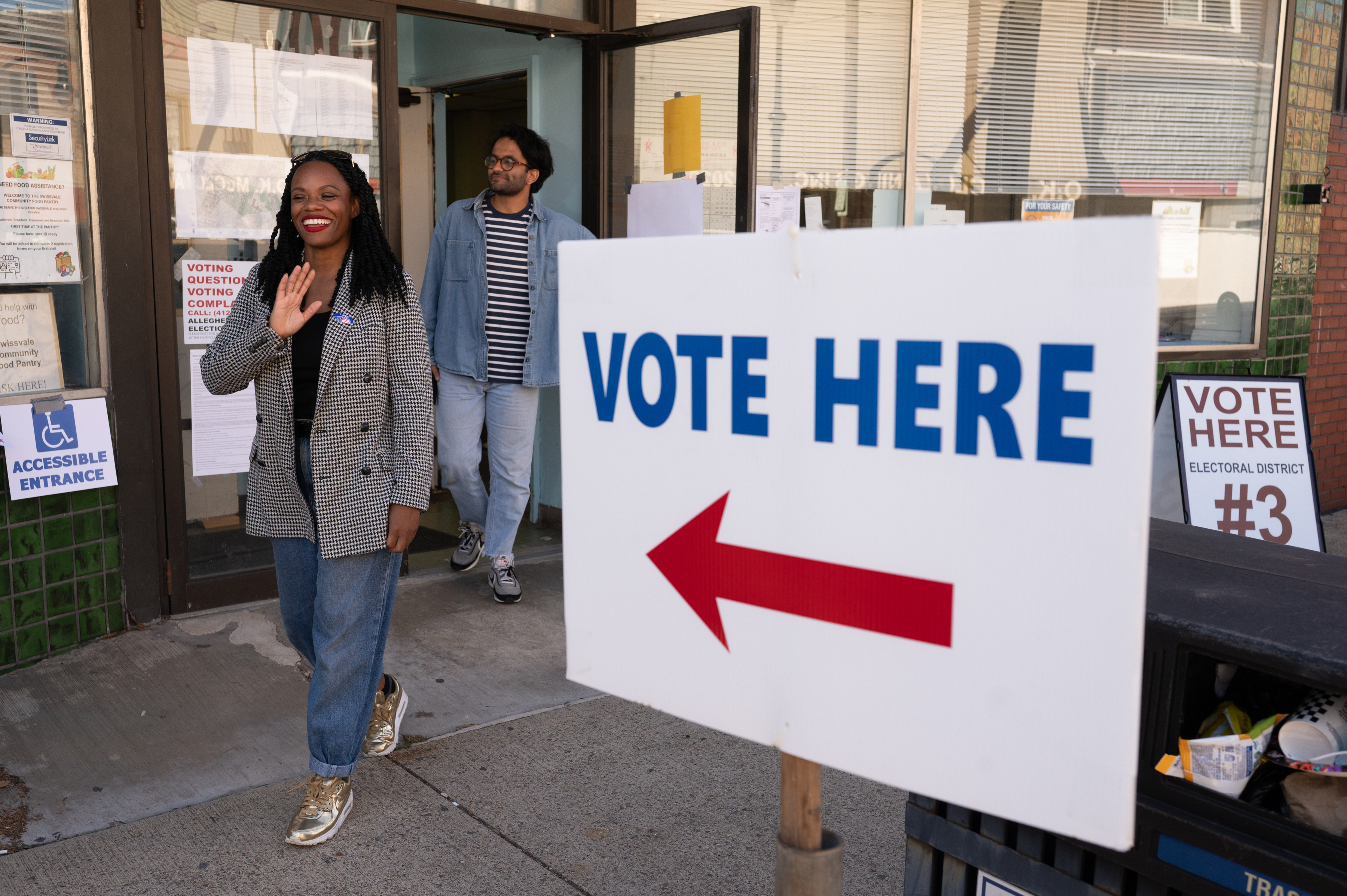Artists, in search of cheap studio space and undeterred by a little grit, have long been seen as urban pioneers, even forerunners of gentrification.
So, theoretically, an over-the-top art show could be just the thing to jump-start a new development in a challenging neighborhood.
This weekend, that theory will be tested at Force Field Project, a two-day festival of installation art, concerts, and dance parties at MaKen Studios, two enormous, grimy factories that are being renovated into studio, fabrication, and live-work spaces.
Organizers hope the event will bring more than a thousand artists and fans to the impoverished and crime-ridden Harrowgate section of Kensington — and maybe turn some of them into future tenants.
The project is the brainchild of two Philadelphia artists, Joe Bartram and Tim Eads, with support from CultureTrust and donated space from Shift Capital, the real estate start-up that owns the buildings.
Cait Kenny, project manager for MaKen North (3525 I St.) and MaKen South (3401 I St.), which together total 250,000 square feet, said the negotiations were simple. "Force Field wanted to take a risk, and we were like, 'That's cool.' "
Local
Breaking news and the stories that matter to your neighborhood.
For Shift, she said, there are numerous benefits: "bringing energy to the building, and exposure to the Kensington neighborhood. . . . Seeing who the artists are out there, and how we can get them in the building and retain them in Philadelphia. And lastly, it's going to be fun."
Events like this have been part of Shift's strategy from the start. Kenny was first hired as a part-time event planner, tasked with activating the raw space as it was being partitioned into white-walled studios.
Shift partner Imar Hutchins said the company's goals required a fresh approach.
"Hopefully, this is a new model, where it's not just asking artists to blaze a trail in the neighborhood and then get them out and get someone else to pay more, but to create long-term affordable space for them," he said. "We're trying to build a creative ecosystem that's self-sustaining."
That includes offering a range of spaces, from 300-square-foot studios for $250 per month up to 20,000-square-foot manufacturing spaces, depending on the tenant's needs.
And it includes trying to help stabilize the neighborhood, much as the factories did in their heyday.
Before MaKen North was vacated, it had been a textile mill, then an after-dinner-mint factory, then a Jomar fabric warehouse. MaKen South was partly occupied by a screen-printing supplier when Shift bought it in January.
Kenny said she's working with Kensington Renewal and the New Kensington Community Development Corp. to clean vacant lots and create safe corridors in the neighborhood, particularly on the route to the nearby Tioga stop on the Market-Frankford El. She's also connecting with local businesses like Diamond Furniture, which wants to create an American-made product showroom that could provide a retail outlet for MaKen tenants.
But first, they need tenants. (The buildings are about 27 percent occupied.) That's where Eads and Bartram come in.
In planning for the exhibition, they've already brought dozens of artists through the space; some of them have inquired about renting.
For the 45 artists participating in Force Field, the benefit is mutual.
"There isn't a lot of opportunity for artists to show in extremely large spaces," Bartram said, unless they get to the museum level.
Slots were offered in an open call to all artists within 350 miles of Philadelphia; artists from seven states will be showing.
Each was allotted 2,500 to 3,000 square feet for works that include sound art, augmented reality, neon and fluorescent light installations, and a series of elegant cocoons made from zip ties.
Bartram installed monumental white columns reminiscent of air-vents in the cavernous boiler room. Eads constructed an aggressive and disorienting fluorescent "world" within the electrical room, accompanied by the throbbing sound of a vintage sewing machine mating with an electric organ part.
Data Garden, a local electronic music label, is organizing concerts on the roof and in a loading dock, including what Data Garden's Joe Patitucci called the first-ever "live biofeedback dance party." (The energy of people dancing will affect the biorhythms of plants in the room; those biorhythms will be translated to sound, which will in turn be translated into dance music by the DJ, King Britt.)
Patitucci said an event like that just wouldn't work in your typical music venue. "I can use the space to activate the performance, and I can also use the performance to activate the space."
While events like the Hidden City Festival attempt to draw attention to spaces that have been forgotten, this is a whirlwind romance with a space that won't be empty for long. Just a month before the event, plans changed suddenly when a floor of the South building was rented out. Shift offered a different space instead.
Bartram and Eads like the idea of exploiting a fleeting moment in the building's evolution.
While some postindustrial cities have turned white elephants into permanent contemporary art spaces (see: PS1 in Queens or the Mattress Factory in Pittsburgh), they prefer a temporary approach.
It also fits well with their shoestring budget; so far, no major grants have come through and crowdfunding raised just under $5,000, a quarter of their goal.
Eads and Bartram are charging $15 for access to the event, which will also offer local food trucks and Neshaminy Creek beer. They're hoping to cover their costs — several thousand dollars for promotional materials, security, portable toilets, and other expenses — and, if possible, pay the participating artists. They'll pay themselves last - if at all.
After a year of thinking big, though, Eads and Bartram are looking ahead to activating a different type of space, like a few storefronts along South Street.
Next time around, they're ready for something on a smaller scale.



